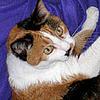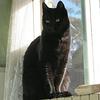Take a photo of a barcode or cover
The most poignant bit of the 115 page book is the disappearance of their nest egg, a single one hundred dollar bill hidden away inside a lap desk that Almanzo had built for Laura. Having traveled for six weeks and hundreds of miles on the hope of buying a new homestead in the Ozarks their dreams are nearly dashed when the arrive. The money isn't in the desk. Did their traveling companions take it? Did Rose play with it and lose it? Did it fall out? Read the book to find out what happened.
I can relate to this story of the secret bill. I'm currently carrying a secret bill of the same amount with me. It was a gift last Christmas and with our tight budget I don't want to spend it on the wrong thing. I'm still trying to decide what to spend it on. In the meantime I keep it close just in case I need it.
On the Way Home is a super short read — I read it in one sitting, and it provides a nice snapshot for how Laura and her family really lived — much more realistic than the children’s books, at least. It’s much more honest and shows a different side of the Ingalls/Wilder family than is portrayed in the books — their situation seems a lot more difficult and harsher than I ever realized as a child reading the children’s books. I really enjoyed Rose’s commentary throughout, and I loved being able to read what Laura observed during her trip. Her entries are short, so by seeing what she includes, you can get a sense of what she cares about and what she worries about. It’s so interesting to see what the midwest was like during those times, and I kept bugging my husband while I was reading to share fun facts as I read through the book.
I would definitely recommend this for Little House on the Prairie fans. It’s written in diary form, so it’s different than the books, but the pictures are fantastic and it’s worth a read. I don’t think smaller children would be very interested in it, but older children might like it.
Also posted on Purple People Readers.
For seven years there had been too little rain. The prairies were dust. Day after day, summer after summer, the scorching winds blew the dust and the sun was brassy in a yellow sky. Crop after crop failed. Again and again the barren land must be mortgaged, for taxes and food and next year's seed. The agony of hope ended when there was no harvest and no credit, no money to pay interest and taxes; the banker took the land. Then the bank failed.
In the seventh year a mysterious catastrophe was worldwide. All banks failed. From coast to coast the factories shut down, and business ceased. This was a Panic.
It was not a depression. The year was 1893, when no one had heard of depressions. Everyone knew about Panics; there had been panics in 1797, 1820, 1835, 1857, 1873.
Later:
We started at 8. Hated to leave our camping place, it seems quite like home. We crossed the James River and in 20 minutes we reached the top of the bluffs on the other side. We all stopped and looked back at the scene and I wished for an artist's hand or a poet's brain or even to be able to tell in good plain prose how beautiful it was. If I had been the Indians I would have scalped more white folks before I ever would have left it.
It's a private travel diary that Laura Ingalls Wilder wrote when Almanzo and Laura left DeSmet and travelled to Missouri via covered wagon with their daughter Rose. This was a personal diary never intended for publication. So we must bear that in mind.
I was curious to see Laura's earlier writing style, To compare this to the later famous Little House books. Her writing even at this early stage still contains that beautiful descriptive style. Her descriptions took me right there with her, just as in her later books. I found it interesting to read about all the different people she met. Her descriptions of the landscapes are vivid.
Also contains lots of black and white photos and maps of the journey and stops along the way.
Recommended for fans of Little House and those wanting a bit more information on the early pioneers and covered wagon travels.





